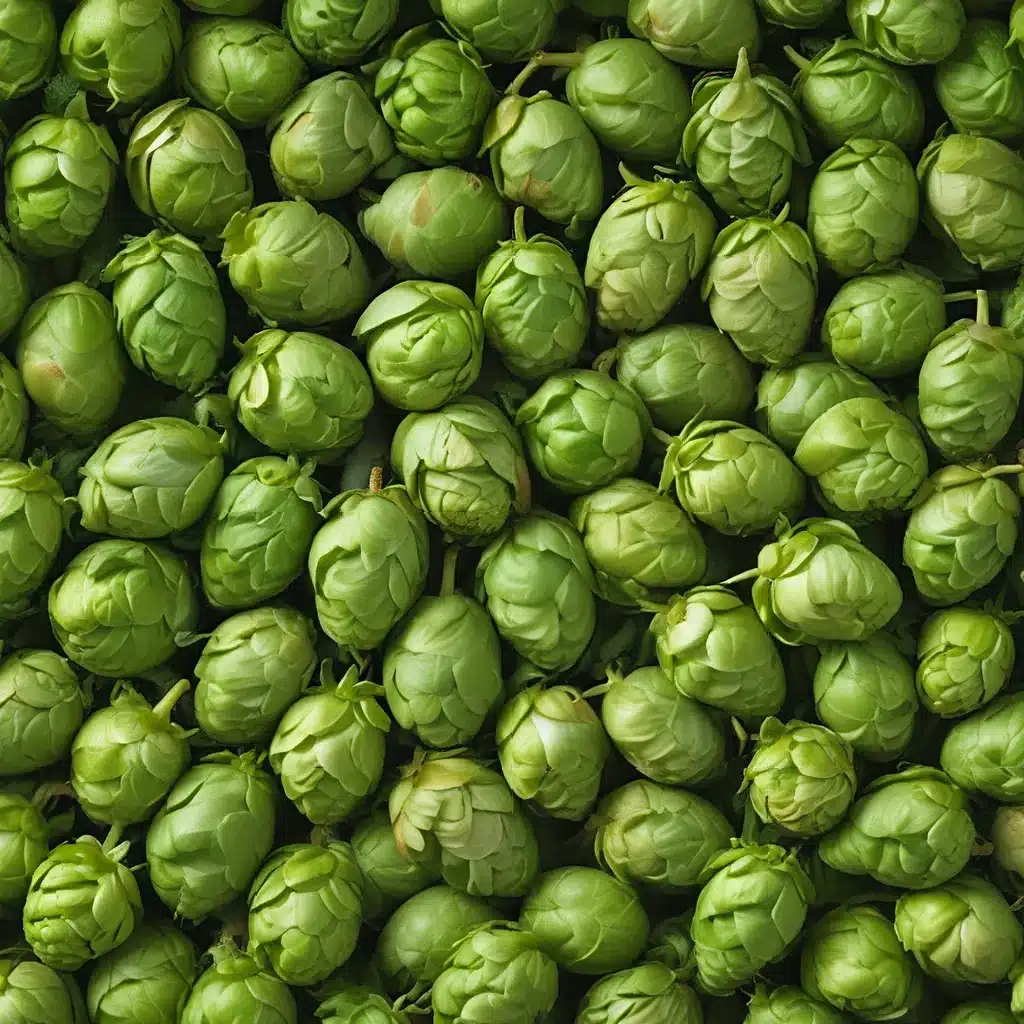
The Vanishing Act
Ah, the noble hop – the backbone of any self-respecting craft beer. Without its bitter bite and aromatic allure, our beloved IPAs, pale ales, and hazy DIPAs would be nothing more than pale, lifeless impersonations of the real thing. But what if I were to tell you that these leafy green gems were slowly…disappearing from our brews?
It sounds absurd, I know. Hops are, after all, one of the four essential ingredients in beer. How could they simply vanish into thin air? Well, my friends, that’s the curious case I’m about to unravel for you.
The Hop Hunters
I’ve been a homebrewer for over a decade now, and in that time, I’ve seen the craft beer landscape evolve in fascinating ways. One of the most striking trends has been the industry’s relentless pursuit of hoppier and hoppier beers. Brewers, both commercial and amateur, have become hop-obsessed, constantly searching for new and innovative ways to extract every last drop of bitterness, aroma, and flavor from those precious cones.
As one homebrewer noted on a forum, the “mystery of the disappearing head” has become a hot topic of discussion. Where have all the hop oils gone? Why do our beers often fail to deliver the intense, in-your-face hop experience we so desperately crave?
Well, my friends, the answer to this mystery lies in the complex dance between hops, yeast, and the brewing process itself. It’s a delicate balance that, when disrupted, can lead to the most perplexing of hop disappearing acts.
Hop Oil Hijinks
At the heart of this mystery are the elusive hop oils – the volatile compounds responsible for that unmistakable aroma and flavor we all know and love. As one researcher pointed out, there are over 1,000 identified hop oil compounds, each with its own unique contribution to the overall hop character.
Now, these oils behave in fascinating ways throughout the brewing process. For instance, did you know that a significant portion of them actually escape during the wort boil? That’s right – all that time and effort we spend meticulously timing our hop additions may be for naught, as the heat and turbulence of the boil send those precious oils straight up and out of the kettle.
But the real kicker is what happens during fermentation. As one study found, the yeast we rely on to convert sugars into alcohol also has a nasty habit of stripping out those all-important hop oils. It’s as if they’ve conspired with the boiling wort to rob us of our hop-forward glory.
The Biotransformation Twist
But wait, there’s more! It turns out that the yeast’s meddling doesn’t stop at simple oil extraction. Researchers have discovered that these industrious microbes are actually capable of transforming certain hop oils into entirely new compounds.
For example, the delightful floral notes of geraniol can be converted into the sweet, rose-like citronellol. And that beloved linalool? Yeast can turn it into the lilac-tinged terpineol. Talk about a shakeup in the hop oil ecosystem!
Now, you might be thinking, “But wait, if the yeast is doing all this biotransformation, surely that means we’re getting even more hop flavor, right?” Well, not quite. According to the research, most of these transformed compounds actually disappear from the beer within the first few days of fermentation. So much for a hop-tastic bounty.
Dry Hopping to the Rescue?
Faced with this mounting evidence of hop oil disappearance, it’s no wonder brewers have turned to dry hopping as their secret weapon. By adding hops directly to the fermenter or keg, they can bypass the boil and fermentation processes that seem intent on robbing us of our hop-fueled dreams.
But even dry hopping has its quirks and quandaries. Research has shown that the majority of hop oils are actually extracted within the first 24 hours of dry hopping. After that, the concentrations either stagnate or even start to decline.
And let’s not forget about the risk of oxygen pickup during dry hopping. One thesis suggests that the introduction of dissolved oxygen is “inevitably” introduced when dry hops are added, potentially leading to unwanted oxidation. Yeast to the rescue again, as the researchers suggest that dry hopping early in fermentation can allow the yeast to metabolize that pesky oxygen before it can do any harm.
The Quest for the Juiciest Hops
So, where does all this leave us in our pursuit of the ultimate hop-forward beer? Well, it seems that the key lies in a delicate balance of techniques and timing. Maybe we need to rethink our approach to hop additions, prioritizing early kettle additions to maximize those elusive sesquiterpenoids, followed by strategic dry hopping to capture the most vibrant hop aromas.
At The Up & Under Pub, we’ve been experimenting with these methods, and the results have been nothing short of revelatory. By carefully managing our hop additions and keeping a close eye on fermentation and dry hopping, we’ve been able to craft IPAs and DIPAs that positively burst with juicy, tropical hop goodness.
Of course, the search for hop enlightenment is an ongoing journey, and the mysteries of the disappearing hops continue to unfold. But with a little bit of science, a dash of creativity, and a whole lot of trial and error, I’m confident that we can unlock the secrets to brewing the hoppiest, most aromatic beers known to man.
So, who’s ready to join me on this hoppy adventure? Grab a pint, pull up a chair, and let’s dive deeper into the curious case of the disappearing hops. The future of craft beer depends on it!

